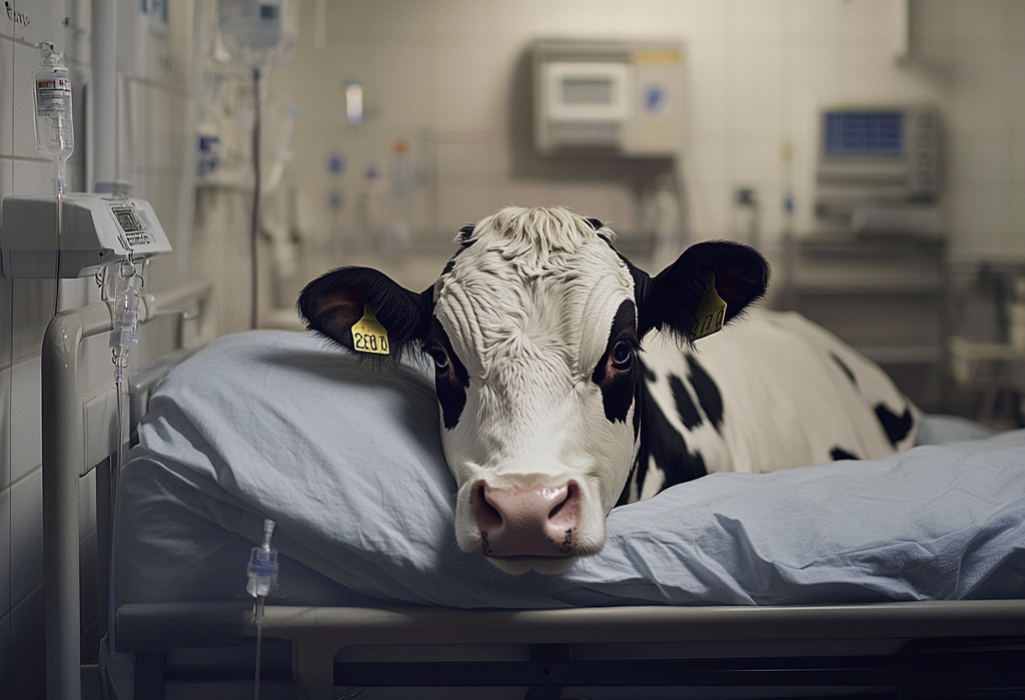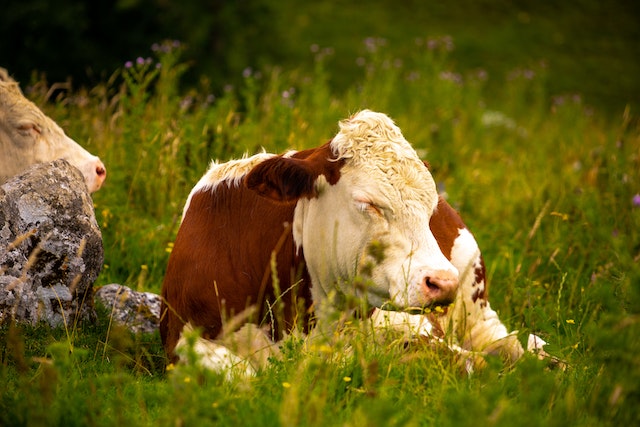Metritis is a significant reproductive issue in dairy cows post-calving. This overview covers definition, causes, diagnosis, treatment, and prevention of this common bovine disease. Clinical signs of metritis are varied, just as much as its bacterial causes, which requires more effort for early detection and management. This post discusses treatment methods, including antibiotics and supportive care, and prevention strategies.
What is metritis?
Metritis is a common reproductive disease in dairy cows, occurring within the first two months after calving. It results from the interaction between bacterial infection and the cow’s inflammatory and immune responses. The condition ranges from severe clinical illness to less apparent but still significant impairment of fertility. Recent research has highlighted the interconnectedness of metabolism, inflammation, and overall health in these cases.
Almost all dairy cows experience some degree of bacterial contamination in the uterus shortly after calving, with uterine inflammation being a normal part of the postpartum recovery process. However, in some cases, pathogenic bacteria may overwhelm the cow’s innate immune defences, or the inflammation may become too severe or prolonged, leading to fertility issues. Approximately 5% to 20% of cows may develop metritis, characterised by overt systemic illness.
Diagnosing metritis in dairy cows
Metritis is typically identified by the presence of at least two of the following symptoms: fetid vulvar discharge, fever, and signs of systemic illness such as dullness, loss of appetite, or decreased milk production. The condition usually manifests between 3 and 9 days post-calving and can significantly impact the cow’s well-being and productivity in the short term. Early detection and proper management of metritis are crucial for minimising its negative effects on dairy cow health and farm economics.
How to treat metritis in cows?
Treating metritis in dairy cows primarily involves the administration of systemic antibiotics. Due to the diverse range of bacteria involved, including Trueperella pyogenes, Escherichia coli, Fusobacterium necrophorum, and Prevotella species, broad-spectrum antimicrobials are typically used.
Supportive care is crucial in treating metritis. It may include:
- Fluid therapy to address dehydration and ketosis
- Nutritional support
- Providing a comfortable environment for recovery
- Pain management using non-steroidal anti-inflammatory drugs (NSAIDs)
Pain management is also important for cows’ recovery, with NSAIDs being used to reduce pain, fever, and inflammation. While NSAIDs may not directly improve reproductive efficiency or milk production, they can enhance animal well-being during this painful and stressful condition.
Choosing the right antibiotic for metritis in cows
In the UK, common treatments include antibiotics such as ceftiofur, oxytetracycline, and penicillin, along with anti-inflammatory medications like flunixin meglumine, ketoprofen, or aspirin. In the United States, recommended treatment options are more limited, with only ceftiofur hydrochloride (CHCl), ceftiofur crystalline-free acid (CCFA), and injectable oxytetracycline being labeled for metritis treatment. Ceftiofur products are widely adopted as the first-choice treatment, with ampicillin and penicillin also commonly used. Some dairies also use intrauterine infusions of antibiotics, particularly oxytetracycline.
To sum it up, the most common used antibiotics are:
- Ceftiofur: Commonly used due to its effectiveness. Available as ceftiofur hydrochloride (CHCI) and ceftiofur crystalline free acid (CCFA).
- Procaine Penicillin
- Oxytetracycline
- Ampicillin Trihydrate
Preventing acute metritis in dairy cow herds
Scientific research has identified several key risk factors for metritis in dairy cows. Negative energy balance plays a crucial role in its development. Primiparous cows (first-time calvers), those with abnormal calving, and cows in poor energy balance during the prepartum period (characterized by high NEFA and low IGF-1 levels) have an increased risk of developing metritis. High prepartum NEFA (non-esterified fatty acids) levels are particularly associated with increased metritis risk.
Acute metritis can generally be prevented through several measures:
- Maintaining a clean calving environment and implementing good hygiene practices during calving assistance
- Ensuring proper nutrition and body condition before and after calving
- Minimising stress during the transition period
- Closely monitoring cows in the early postpartum period
In conclusion
Despite progress, there’s still room for improvement in metritis prevention and treatment. On larger farms, dairy employees—not veterinarians—often identify and treat sick animals. Antibiotics and other antimicrobials are frequently administered based on past experience and rules of thumb, which may not always benefit cows optimally. Moreover, bacterial infections are developing resistance to commonly used antibiotics. The industry still needs better diagnostic criteria and screening tools for fresh cows, as well as a wider range of treatment options.
Sources
https://www.sciencedirect.com/science/article/pii/S0022030218306878
https://www.sciencedirect.com/science/article/pii/S0022030211000889
https://www.sciencedirect.com/science/article/pii/S0022030205729659


